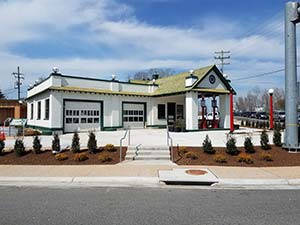We are frequently asked “what is the coolest artifact you’ve ever found?” One of our favorites, and easily in our Top 10, are wine bottle seals. Resting on the shoulders of the dark green wine bottles of the 17th, 18th, and 19th centuries, they range from simple two-letter stamped impressions to intricate heraldic symbols. The most frequent elements include the initials of the bottle’s owner(s) and, if you’re lucky, a date! They are one of the few artifacts you can pick up and “read” and they can easily capture your imagination as they connect you to not just a time and place, but also a person.
Wine bottle seals were a marker of status. The vast majority found in Virginia represented wealthy planters and occasionally their spouses. They might also advertise a tavern keeper or serve as a label for imported spirits (even spring water) from Europe. They are most frequently recovered from plantation and tavern sites, often places associated with their owners, such as a home place, but occasionally a relative’s house, a second home (in a nearby port town) or a friend’s house. They may have served as gifts, offering the recipient the opportunity to show off to visitors his many friends and colleagues through their wine bottle seals.
Our excavations at Fairfield Plantation have recovered several different types of seals so far, including three varieties associated with Lewis Burwell II (1651-1710), his son Nathaniel Burwell (1680-1721), and family friend Robert “King” Carter, whose daughter Elizabeth married Nathaniel. Lewis Burwell II’s seals have been found on several sites across the colony, such as Gloucester Town (where he owned several lots), Jamestown (where he served in the legislature and owned several lots), and Williamsburg, associated with the home of his adversary, Governor Francis Nicholson.
We’ve been lucky enough to find several different types of wine bottle seals at other sites on the Middle Peninsula. Unfortunately, we’ve been unlucky in identifying the owners of some of these seals. For instance, our work at Gloucester’s Colonial Courthouse recovered a seal with the initials “CCD” in a triangular setting. We believe they are the initials of a husband and wife, with the last name starting with ‘D’. If you have any suggestions about the identity of this couple, let us know.
One of the greatest resources for researching wine bottle seals is a new crowd-sourced database put together by Dr. Eleanor Breen and the staff and interns of Mount Vernon’s Department of Historic Preservation and Collections and hosted by the Council of Virginia Archaeologists. With a map, gallery, and database entry for each seal, you can compare your finds against a constantly growing list of seals found across the United States and beyond. You’ll even find some of our favorite seals there, too. The site is more than just a collection of cool artifacts, though. It’s a community-focused outreach initiative that anyone can help build, and it speaks to the lives of influential individuals, while also speaking to the broader history of our region. Stay tuned for more installments of “The Coolest Artifacts.”

Most interesting. Thank you.
Thank you for following our blog, Tracy, and we will try to keep them interesting!
Great piece. I had no idea what old wine seals represented. It’s interesting to get a new perspective as to where a lot of the modern wine artwork originated from.
I have recently found what I believe to be a wine seal based on some pictures and I am wondering how to find the origin of the seal. It actually matches one of the seals on the site mentioned in the blog post. Do you have any advice on how to identify its origins?